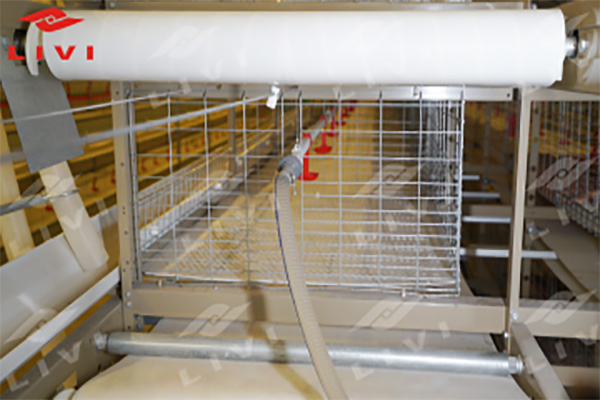Optimizing Chicken Cage Ventilation Systems for Enhanced Productivity
Chicken cage ventilation systems play a crucial role in the efficiency and health of poultry farming. The right ventilation can lead to improved growth rates, reduced mortality, and higher profitability for farmers. In this article, we’ll explore the key aspects of chicken cage ventilation systems and how they can benefit your farm.
Understanding the Importance of Ventilation
Effective ventilation in chicken cages is essential for maintaining a healthy environment. Poor ventilation can lead to high humidity, which in turn increases the risk of respiratory diseases and ammonia buildup. According to a study by the University of Georgia, proper ventilation can reduce respiratory disease incidence by up to 40%.

- Reduces humidity and ammonia levels
- Prevents respiratory diseases
- Improve feed conversion rates
Key Components of Chicken Cage Ventilation Systems
There are several key components that make up a comprehensive chicken cage ventilation system:
- Intake Vents: Allow fresh air to enter the cage.
- Exhaust Vents: Remove stale air and ammonia.
- Control Panels: Regulate the flow of air.
- Filters: Trap dust and particles, improving air quality.
Best Practices for Ventilation Design
When designing a ventilation system for your chicken cage, consider the following best practices:
- Calculate the necessary air exchange rate based on the number of chickens and the size of the cage.
- Position intake and exhaust vents strategically for optimal air flow.
- Use weatherproof materials to ensure longevity.
- Regularly inspect and maintain the system to prevent blockages and ensure efficiency.
According to the National Chicken Council, an average chicken needs 1.5 to 2 cubic feet of air per minute.
Cost-Benefit Analysis
Investing in a high-quality ventilation system may seem costly upfront, but the long-term benefits are substantial. A well-ventilated farm can see a significant reduction in healthcare costs due to lower disease incidence and an improvement in the overall health of the chickens. In addition, better ventilation can lead to faster growth rates, resulting in higher profits.
Table: Cost-Benefit Analysis of Chicken Cage Ventilation Systems
| Year | Healthcare Costs (Reduced) | Feed Conversion Rate Improvement | Profit Increase |
|---|---|---|---|
| 1 | $1,000 | 2% | $500 |
| 5 | $3,000 | 4% | $2,000 |
Conclusion
Investing in a well-designed chicken cage ventilation system is a wise decision for any poultry farmer. By maintaining a healthy and comfortable environment for your chickens, you can enhance productivity and profitability. If you’re considering a new ventilation system for your farm, don’t hesitate to contact us for a free design consultation and equipment quote.
profitability. If you’re considering a new ventilation system for your farm, don’t hesitate to contact us for a free design consultation and equipment quote.





